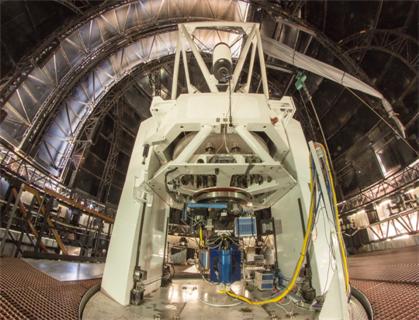Workshop to mark 20 years of Himalayan Chandra Telescope to highlight the science it produced
New Delhi: In the cold, dry desert of Ladakh, 4500 meters above the mean sea level, for two decades, the 2-m diameter optical-infrared Himalayan Chandra Telescope (HCT) at the Indian Astronomical Observatory (IAO) has been scanning the night sky in search of stellar explosions, comets, asteroids, and exo-planets.
The telescope remotely operated using a dedicated satellite communication link from the Centre for Research & Education in Science & Technology (CREST), Indian Institute of Astrophysics (IIA), Hosakote, about 35 km northeast of Bangalore, celebrates its 20th birthday crediting itself with 260 research papers using data obtained from it.
On this occasion, to mark the 20 years of the first light event of the 2m HCT, IIA, an autonomous institute of the Department of Science and Technology (DST), has organized a two-day online science workshop during September 29-30, 2020. The workshop will be inaugurated by Prof. Ashutosh Sharma, Secretary, DST) and addressed by Dr. V. Ramamurthy, former Secretary, DST, during whose tenure IAO and the HCT project were approved and completed. The workshop will highlight the science that the telescope has produced since the commissioning and the future of IAO.
The telescope, which is at par with some of the older, well established, international 2m class telescopes telescope equipped with 3 science instruments, has provided data that has been used in the Ph.D. theses of 40 students (18 from IIA and 22 non-IIA), and currently, 36 students (16 from IIA and 20 non-IIA) pursuing Ph.D. degree, are collecting data with the HCT.
The area of research covers a wide range of topics, from solar system objects to cosmology. Some of the thrust research areas are study of solar system bodies like; comets, asteroids, the study of star formation processes and young stellar objects, study of open and globular clusters and variable stars in them, abundance analysis of elements in the atmosphere of evolved stars, star formation in external galaxies, Active Galactic Nuclei, stellar explosions like novae, supernovae, gamma-ray bursts and so on. The telescope has been used in many coordinated international campaigns to monitor stellar explosions, comets, and exo-planets, and has contributed significantly to these studies.
“Building, maintaining, and effective scientific use of the Himalayan Chandra Telescope has given our observational astronomy community experience and confidence to be the creators and international partners in the best of next-gen optical telescopes,” said Prof Ashutosh Sharma, Secretary, DST.

